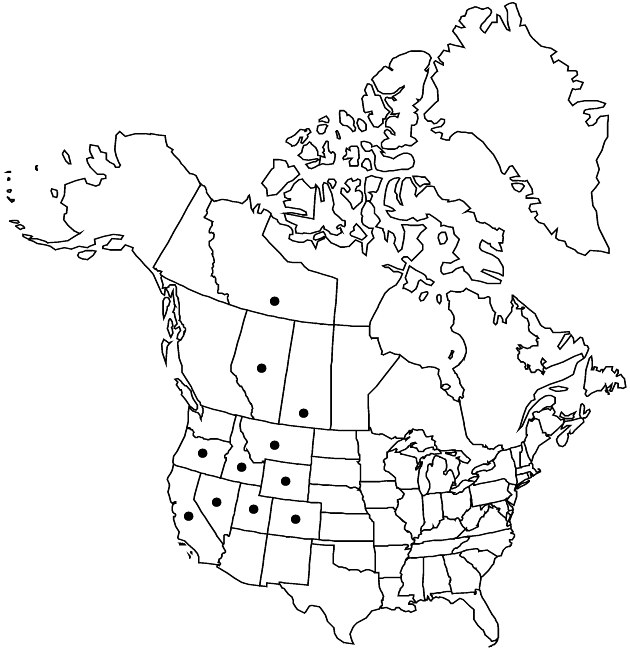Difference between revisions of "Pyrrocoma uniflora"
Erythea 2: 60. 1894.
FNA>Volume Importer |
FNA>Volume Importer |
(No difference)
| |
Revision as of 18:45, 24 September 2019
Plants 7–40 cm. Stems 1–7, curved-ascending to decumbent, red-tinged, sparsely leafy to almost naked, glabrate to lanate or tomentulose, eglandular. Leaves: basal petiolate, blades linear to oblanceolate or elliptic, 40–150 × 3–20 mm, margins usually sharply dentate to laciniate, rarely entire; cauline sessile, few, blades lanceolate, 20–50 × 2–6 mm, bases cordate, clasping; faces glabrous, sparsely to densely shaggy-tomentose or lanate, eglandular. Heads usually borne singly, sometimes 2–4 in racemiform arrays. Peduncles 2–12 cm. Involucres hemispheric, 6–13 × 10–20 mm. Phyllaries in 2 series, appresssed or loose, linear-lanceolate, 6–11 mm, subequal or unequal (sometimes outer ± shorter and green throughout), margins ciliate, faces usually villous to lanate, rarely glabrous. Ray florets 18–50; corollas 7–11 mm. Disc florets 35–60; corollas 5–8 mm. Cypselae subcylindric, 2–4 mm, obscurely nerved and angled, faces sericeous; pappi tawny, 5–7 mm.
Distribution

w North America.
Discussion
Varieties 2 (2 in the flora).
Pyrrocoma uniflora is recognized by its somewhat reduced habit, tomentose leaves and phyllaries, heads borne singly or in small racemes, and sericeous cypselae. It is probably most closely related to P. racemosa.
Selected References
None.
Key
| 1 | Stems and leaves tufted-tomentose; involucres 10–13 mm; phyllaries loosely appressed, unequal | Pyrrocoma uniflora var. gossypina |
| 1 | Stems and leaves tomentose to glabrate or glabrous; involucres 6–9 mm; phyllaries appressed, subequal | Pyrrocoma uniflora var. uniflora |